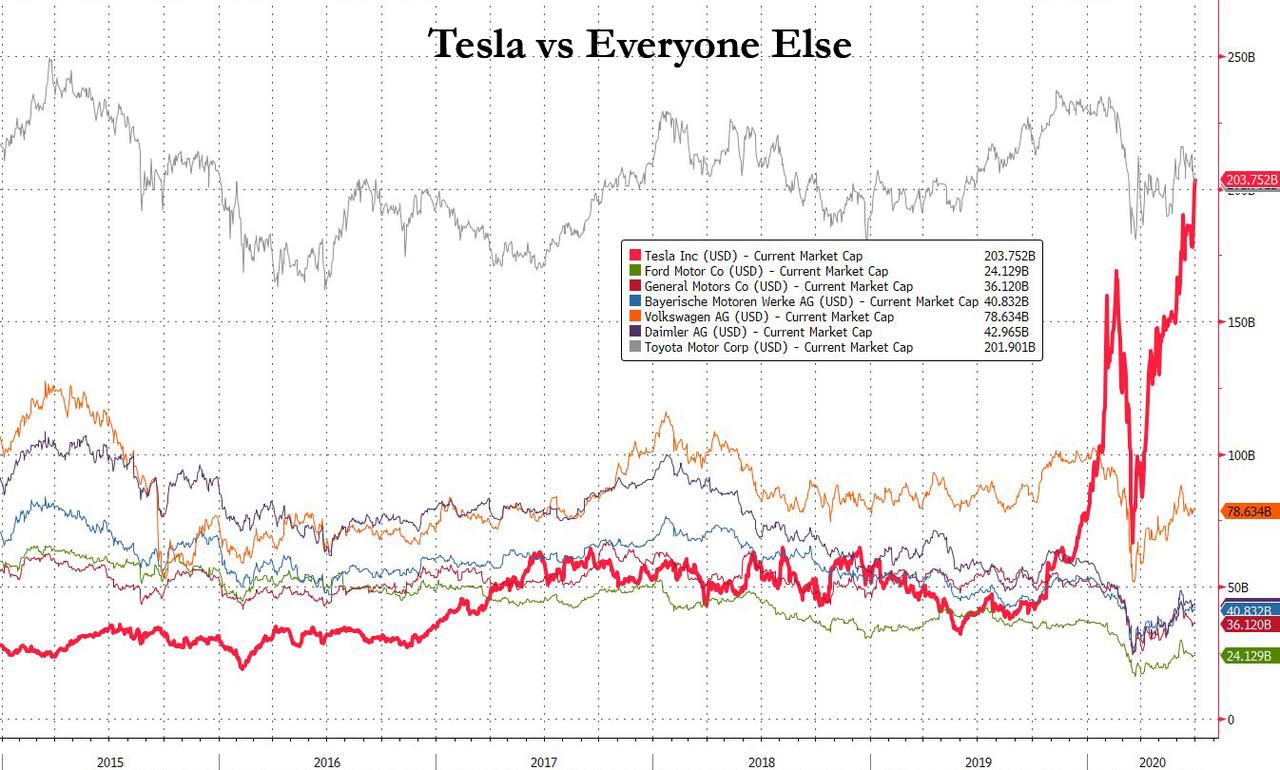Federal Safety Regulators Are Probing Tesla's Battery Cooling System Tyler Durden Wed, 07/01/2020 - 20:01
Last week, Business Insider reported that when Tesla began selling its Model S back in 2012, the cars were equipped with a "poorly designed battery" that was susceptible to leaking, and that said leaks may have been the cause of short circuits and ensuing fires. More damning, however, and potentially exposing the company to criminal prosecution, is that Musk sold the cars despite allegedly knowing about the potentially deadly flaw. According to the report, the leaks became an "urgent concern" in spring 2012 due to two problems with the cooling system:
- First, the aluminum Tesla chose to use for the end fitting of the cooling tube sourced from a Chinese company, was susceptible to cracks and pinholes, according to tests done by the third-party firm IMR Test Lab in the summer of 2012. Business Insider reviewed these test results.
- And second, the design of the end fitting piece in the cooling system was imperfect, such that even after the part was brazed together, there were gaps between the cooling coil and its end fitting piece that connected it to the car, according to emails viewed by Business Insider. Sometimes, employees would have to force pieces together with a hammer to close gaps, according to internal Tesla documents viewed by Business Insider and a former Tesla employee.
While traditionally federal regulators have ignored complaints about subpar Tesla quality control and design, this time the company, which earlier today surpassed Toyota as the world's most valuable car maker with its stock price rising above $1,100 per share and equivalent to a market cap above $200 billion...
... appears to finally be in the spotlight, because according to the LA Times, federal safety officials are probing allegations of defective cooling systems installed in early-model Tesla vehicles.
Picking up on the Business Insider report which was based on a review of internal emails, the Times said it also reviewed copies of the emails "and other documentation that show the tubes were installed from 2012 until 2016, at which time Tesla cut off a supplier and began manufacturing the tubes in house."
The National Highway Traffic Safety Administration, in a statement to The Times, said it is “well aware of the reports regarding this issue and will take action if appropriate based upon the facts and data.” The agency also reminded auto manufacturers that they are required “to notify the agency within five days of when the manufacturer becomes aware of a safety related defect and conduct a recall.” Tesla appears to never have issued such notification.
The National Transportation Safety Board also issued a statement to The Times, saying it is "in the final stages of completing a Special Investigative Report based upon its investigations of several crashes involving electric vehicles and the resultant battery fires/thermal events."
The NTSB is an investigatory agency which, unlike the NHTSA, has no enforcement power. When it investigates electric vehicles fires, the board said, it considers “whether an existing mechanical issue or material failure contributed to the crash or the severity of the crash.”
The Business Insider article said that Tesla knew the battery cooling system installed in Model S cars had a flawed design but sold the cars anyway, citing internal documents and “three people familiar with the matter.”
As noted last week, sources had told Business Insider that the end fittings on the cooling tubes often didn’t quite match up with the connection to the car and had to be forced into position — sometimes, the internal emails show, with a hammer. A source with direct knowledge of the matter told The Times the same thing, asking not to be identified for fear of retaliation by Tesla Chief Executive Elon Musk.
The Times then adds that although Tesla used the same China-based supplier for four years, "it’s not clear if and when the cooling tube problems were remedied before Tesla brought manufacturing in-house in 2016. Without information from the company or safety regulators, it’s impossible to know how many cars were affected."
It’s also unclear whether the issue affects the Model X, which used the same cooling system. Model X production began in 2015.
The Tesla Model 3 uses a different, more efficient cooling system that does away with the bending coils in the Model S and Model X.
Citing battery fire experts, the Times notes that the flammable glycol coolant in the Model S system could cause or exacerbate a battery fire if the fluid or its residue contacts a broken battery cell after a crash. In a phenomenon known as thermal runaway, a single battery on fire can spread to other battery cells in a vehicle, causing a larger fire.
On the surface, this would explain why over the years there had been quite a few reports of Tesla cars catching fire after accidents, as well as several occasions when the car burst into flames spontaneously.
Although it’s unclear how common electric car fires are, there were several media reports of Tesla fires in the months leading up to May 2019, when Tesla began limiting Model S charges to 80% of capacity at the company’s Supercharger stations. The closer a battery gets to full, the hotter it gets.
Last November, NHTSA said it was probing potential defects in Tesla batteries. According to The Times, the agency declined to say whether the cooling tube leak allegations are part of that investigation or are being looked at separately.
https://ift.tt/3dSDFhE
from ZeroHedge News https://ift.tt/3dSDFhE
via IFTTT





0 comments
Post a Comment